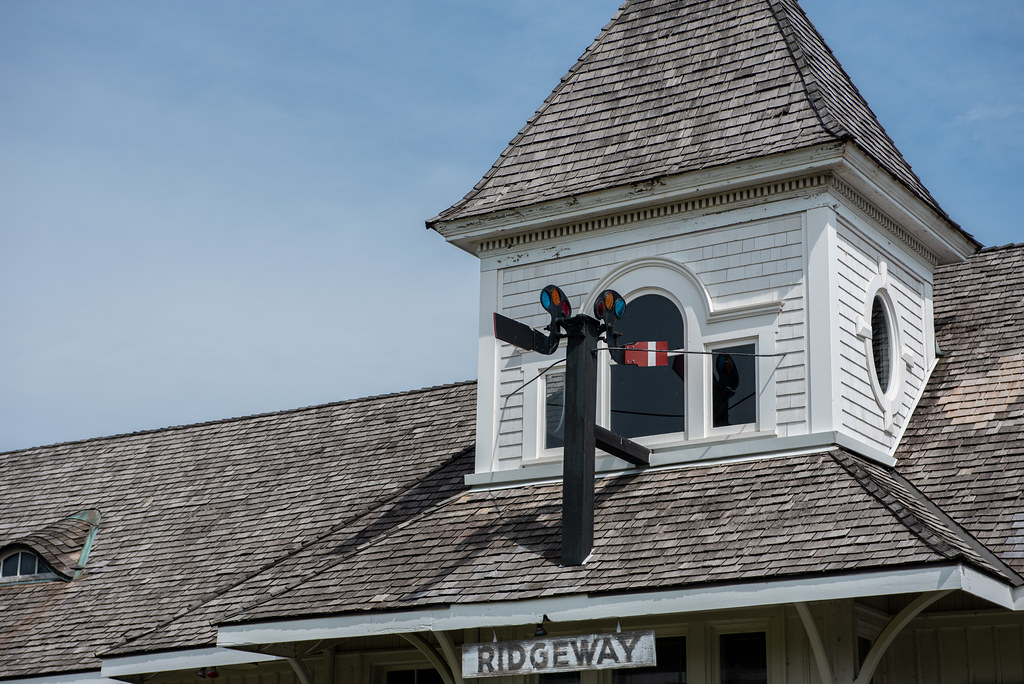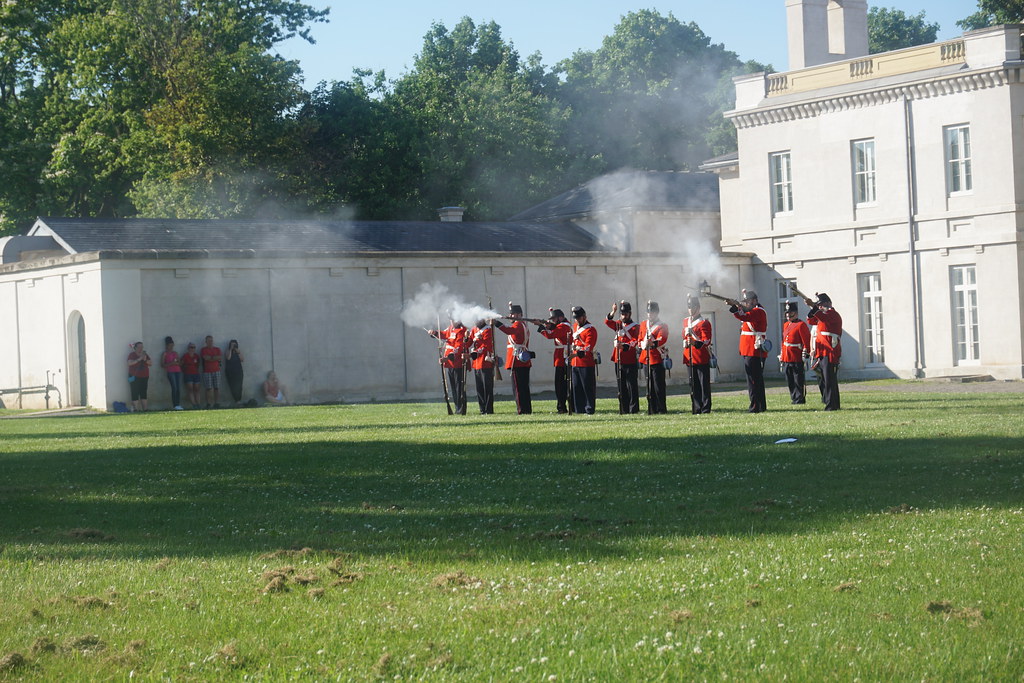Sitting as the main building at the Fort Erie Railway Station, the former station that once served the village of Ridgeway is a prime example of Grand Trunk’s plan to modernise the railway at the start of the 20th Century. It is also interesting that a village as small as Ridgeway would warrant such a large station.

Graflex Crown Graphic – Nikon Nikkor-W 1:5.6/180 – Ilford HP5+ @ ASA-200 – Pyrocat-HD (1+1+100) 9:00 @ 20C
The railway first came to Ridgeway thanks to Brantford, Hamilton and the Great Western Railway. As a result, the Buffalo, Brantford & Goderich Railway, which eventually became the Buffalo & Lake Huron Railway despite its financial instability through the first half of the 1850s, finally reached Paris, Ontario in 1856, heading further along to Goderich. Buffalo & Lake Huron would start constructing stations in 1855; these were simple wooden structures that were more shelters than a modern train station. While I’m unsure if such a station had been built at Ridgeway, the first station I could confirm was named for the township in which Ridgeway was located and carried the name Bertie Station and was completed in 1864 by Grand Trunk Railway. Grand Trunk by 1864 had taken over the entire Buffalo & Lake Huron network to prevent the line from falling into American hands or disappearing entirely. Again, this first station would be a simple shed or barn-like station built in board and batten construction, located in the downtown of Ridgeway on Ridge Road between Hibberd and Disher. It contained a general waiting room, baggage room and a station master’s office with a ticket window and telegrapher bay. The station’s only notable point took place in July 1866 when the combined Canadian Militia force arrived before marching north to meet a body of Fenian invaders and was forced to retreat to the station and departed.

Nikon D750 – AF-S Nikkor 28-70mm 1:2.8D
Nikon D750 – AF-S Nikkor 28-70mm 1:2.8D
By the end of the 19th Century, much of the area had become a popular spot for tourists, especially the draw of the resorts and beaches of Crystal Beach. And under Charles Hayes, starting in 1896, Grand Trunk began a massive modernisation project and replaced many older stations. The Bertie Station would be among the first stations to be replaced. The new 1900 station now carried the name Ridgeway. Constructed in the style of Queen Anne Revival with Picturesque elements. Keeping with the board and batten wooden construction to complete the new more giant station. The station would feature a larger general waiting room and baggage room with an exterior porte-cochère to shelter passengers as they arrived and departed from the station. The interior would be richly ornamented with stained glass windows in the waiting room, along with excellent lighting and heat: a station master’s office, ticket window and telegraph operator bay. A tower would also provide better views of the tracks running in either direction. The station again offered assistance to the town in 1913 when a fire threatened the community; a Grand Trunk operator telegraphed for additional water, which arrived in time to save both the town and station from destruction. Canadian National would take over operations in 1923 and continue to run passenger and freight services; the station would receive a railroad red paint job in the mid-century. Passenger services ceased in 1970 as traffic dwindled on the line.

Mamiya m645 – Mamiya-Sekor C 35mm 1:3.5 N – Ilford FP4+ @ ASA-100 – Kodak D-23 (Stock) 6:00 @ 20C
Sony a6000 + Sony E PZ 16-50mm 1:3.5-5.6 OSS
When Canadian National began planning to remove the old right-of-way, the town of Fort Erie, wishing to preserve local railway heritage, purchased the station from Canadian National in 1974. Then carefully remove the station from its original location in Ridgeway and moved it several kilometres away to the new Fort Erie Railway Museum. After several years of restoration efforts, the station reopened along with size Canadian National Locomotive 6218, a 4-8-4 “Northern” type locomotive. The restoration saw the removal of the red paint and repaint in a white with green paint colour scheme. The interior and exterior features were cleaned and restored, including a Canadian National era semaphore single tower. Inside the station became the main exhibit space for the museum. By 1985, Canadian National had abandoned and removed the tracks between Fort Erie and Caledonia on the original Buffalo & Lake Huron line; some sections remain in operation today. The line now forms a multi-use trail known as Friendship Trail. In the town of Ridgeway, a pavilion was constructed near where the two original stations once stood.